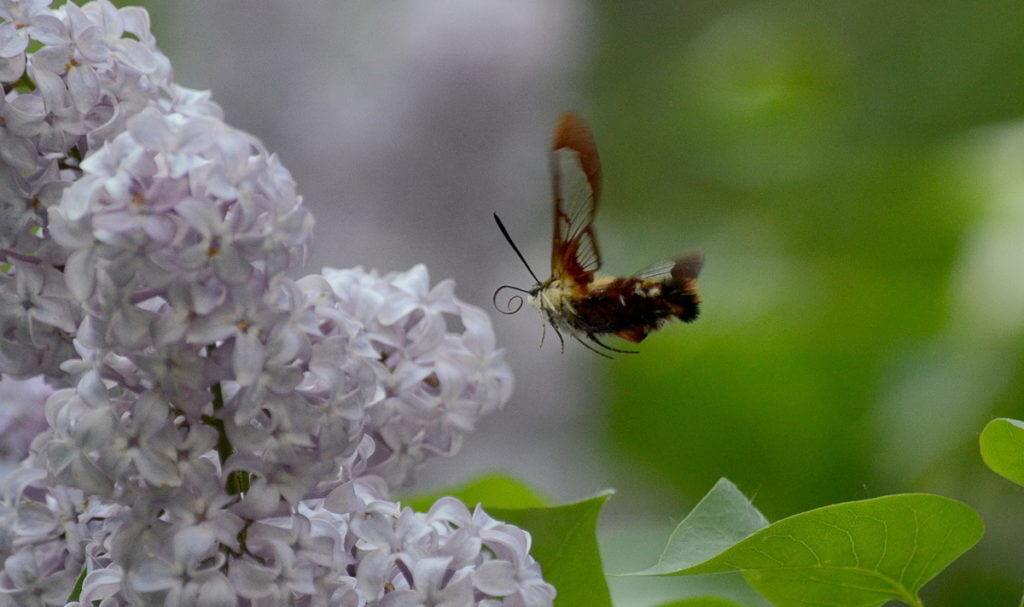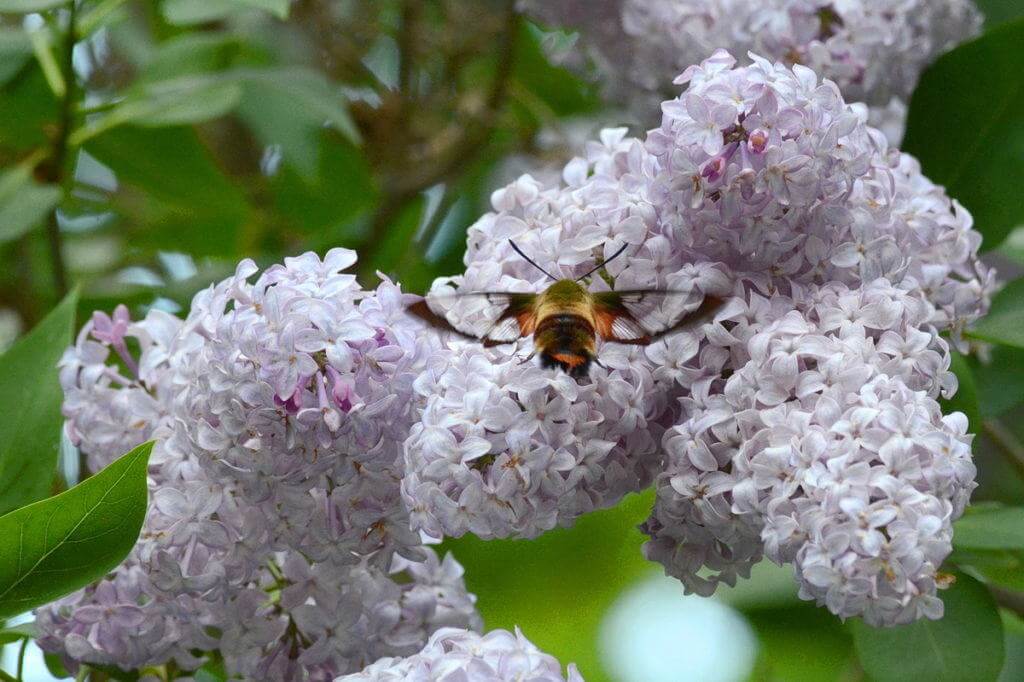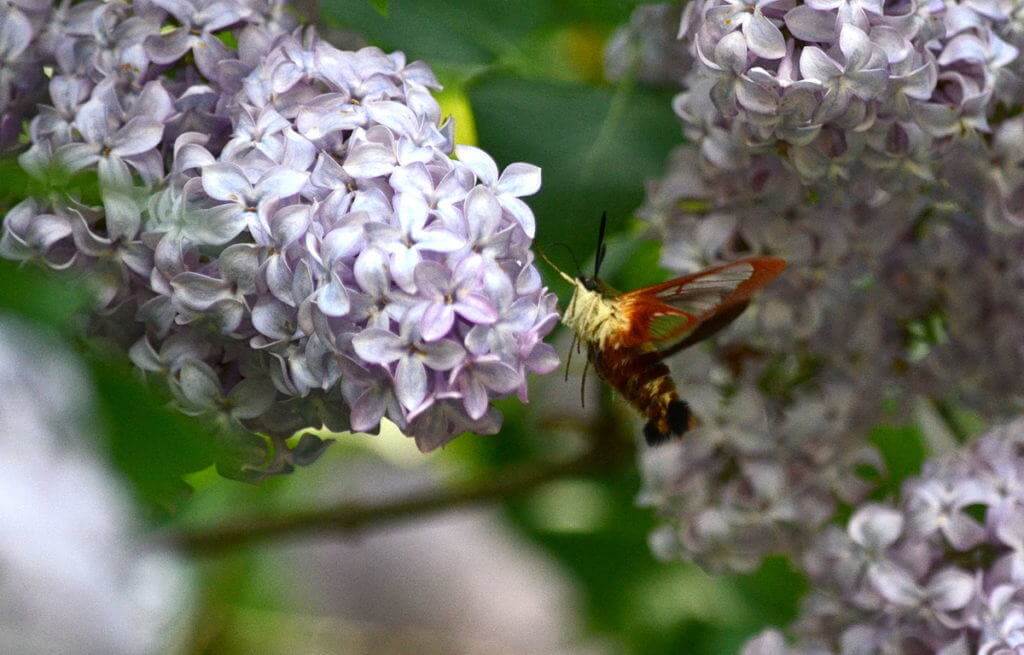Hummingbird Clearwing Moth at Oxtongue Lake
If ever you have seen a Hummingbird Clearwing Moth, you were probably mesmerized as we were by the sheer look of its see-through wings and the way it hovers like a hummingbird.
An early June day filled with sunshine provided perfect conditions for at least a dozen Canadian Swallowtail Butterflies that were sipping nectar from some lilac bushes. As we busily snapped photos of those beauties, this moth made an appearance.
One usually associates moths with nighttime, but Hummingbird Clearwing Moths fly and feed on nectar during the daytime. Lilacs are one of the flowers that these moths will visit because the blossoms are purple and because they have deep throats. These moths seem to prefer pink and purple flowers, although not exclusively.
Rather than land on a flower like a bee, these moths hover over a blossom, and that is how the species came to be referred to as Hummingbird Moth. While beating its wings rapidly to remain in one spot, a Hummingbird Clearwing Moth unfurls its long proboscis and inserts it into the throat of a flower in order to sip the nectar from deep within.
When I began to do a little reading about this species of moths, I was fascinated to learn that their wings are almost a solid colour, dark red to black, when they emerge from their cocoons. After a Hummingbird Clearwing Moth takes its inaugural flight, the scales on the wings fall off except those that remain to form the reddish-brown borders and veins.
Being early June, this Hummingbird Clearwing Moth would have only just emerged from its cocoon within the leaf litter where it overwintered in the pupal stage. Only one generation is produced per year in the north, so sometime before August, these moths lay their eggs that will hatch within one week. The miracles of life never cease, and this gem of a moth with the stained-glass wings sure proves that saying.
Frame To Frame – Bob and Jean






